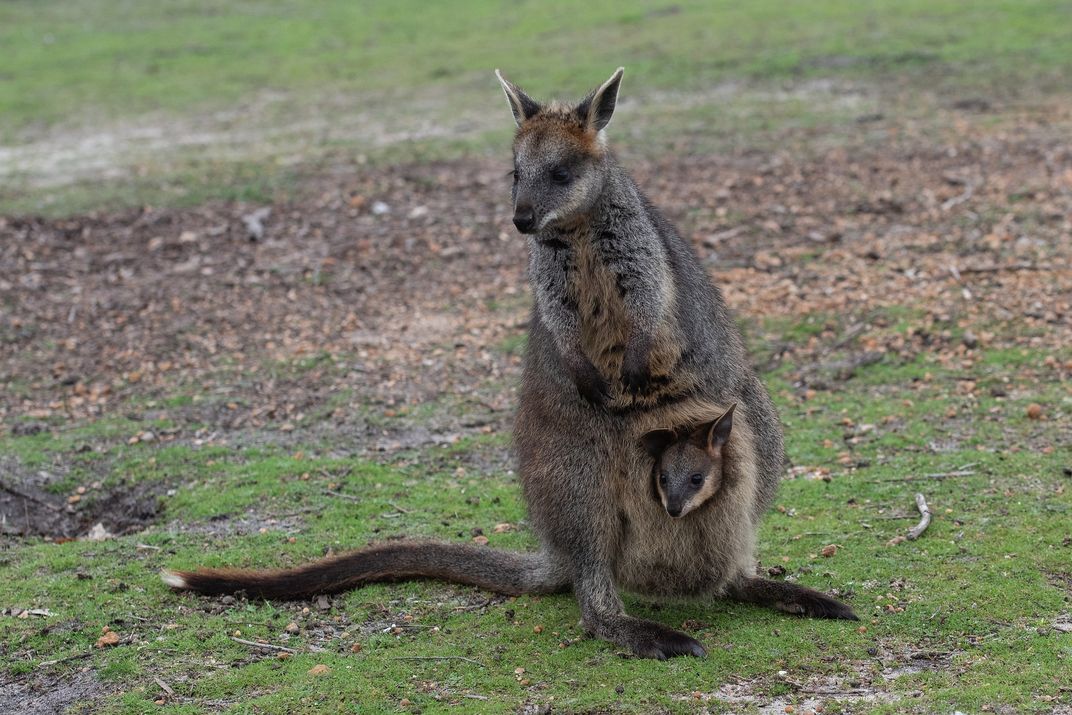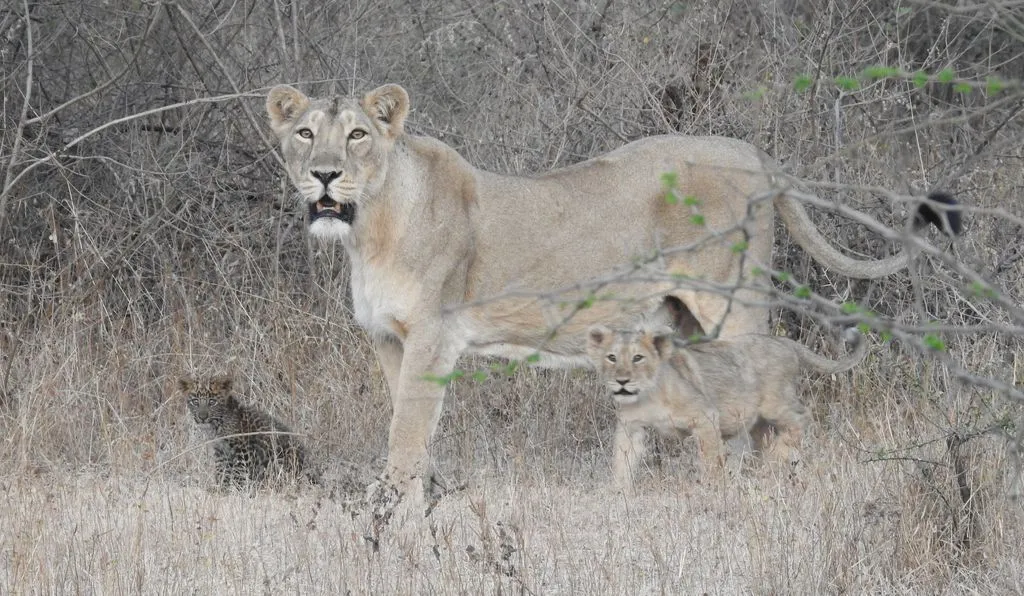Eight Things We’ve Learned About Moms Since the Last Mother’s Day
From pregnancy to birth and beyond, mothers, both animal and human, show off some amazing skills
/https://tf-cmsv2-smithsonianmag-media.s3.amazonaws.com/filer/65/64/65649884-f9aa-4e3c-b337-d22e1940d627/screen_shot_2019-07-31_at_112752_am.png)
We freewheeling humans may be the only species that reliably showers mothers with cards and confections on the second Sunday in May, but all animal moms deserve some serious love and gratitude—probably on more than an annual basis.
From conception to birth and beyond, moms across the tree of life play an indispensable role in their kids’ survival and success. Here are a few things we’ve learned about the many ways the bond between a mother and her offspring manifests since our last Mother’s Day.
We Still Have a Lot to Learn About the Placenta
A mammalian fetus usually spends a few weeks or months or so in their mother's placenta, an organ that shuttles nutrients, oxygen and waste between a mom-to-be and her embryo during pregnancy. Understanding this bizarre and complicated bit of anatomy is, quite literally, crucial to comprehending life as we know it.
Plenty about the placenta is still puzzling to researchers, including whether it hosts its own collection of friendly microorganisms, or microbiome. Though microbes are known to quickly colonize both the inside and outside of the human body after birth, playing important roles in immunity, digestion, and more, the placenta has traditionally been considered a sterile spot. If the placental microbiome exists—as some researchers argue it does—it could represent a fetus’ first exposure to benign bacteria and play a role in shaping the child’s future health.
But not everyone is on board with the idea. Last July, a group led by Stephen Charnock-Jones of the University of Cambridge published a study arguing against the existence of this mysterious microbial population, suggesting that previous experiments that had detected it had been the result of contamination in the lab, Laura Sanders reported for Science News at the time. The debate will inevitably rage on, wrote Ed Yong for the Atlantic, but highlights how little we understand about the microbes that inhabit our bodies.
Swamp Wallabies Can Get Pregnant While They're Already Pregnant
Regardless of whether the placenta teems with bacterial tenants, this organ is inarguably a powerhouse—especially in the swamp wallaby, a petite marsupial that romps around Australia. Thanks to a series of weird quirks in their reproductive cycles, female swamp wallabies can get pregnant while already pregnant. These oddball animals boast two separate uteruses, and can alternate embryo implantations between them, allowing some overlap in gestation if they have sex before giving birth.

“As soon as they reach sexual maturity, these females are—perhaps unfortunately—pregnant all the time,” University of Melbourne biologist Brandon Menzies, who led the team that made the discovery, told Smithsonian magazine earlier this year.
Because their offspring suckle in the pouch for many months after birth, female swamp wallabies can end up supporting three young at once: an older joey that’s left the pouch, but still returns to mom for food; a younger joey nursing inside the pouch; and an incubating fetus that has yet to be born. Now that’s some impressive single parenting.
A 306-million-Year-Old Lizard Mother and Her Child Fossilized Together
The scientific community has learned about a few very old examples motherhood. Among them is a 306-million-year-old fossil immortalizing two lizard-like creatures huddled together in a tree stump—presumably, researchers argue, a mom protecting its kid.
If that’s indeed the case, this rare fossil could represent an extremely ancient instance of parental care in amniotes, the group that includes today’s mammals, birds and reptiles. The behavior, which requires an adult animal to invest time, energy and resources into its offspring after birth, might sound intuitive for modern creatures, but may not have come as easily to our egg-laying predecessors.
“Parental care is a strategy with a long antiquity,” paleontologist Arjan Mann told Smithsonian magazine last year. “Clearly, it’s worked out multiple times in evolutionary history. And we should have an appreciation for it.”
Were Ancient Europeans Using Clay Vessels to Feed Their Infants Animal Milk?
Not quite as old, but perhaps at least as impressive, are a set of 3,000-year-old clay vessels that may have been used to feed babies in what’s now Europe, Bruce Bower reported for Science News in September. Spouted and laced with traces of nonhuman animal milk, the containers may represent rudimentary baby bottles used on young kids during weaning, researchers argued in a paper published last year. By this point in time, dairying in Europe had been in place for at least 3,000 years, and women may have used milk from livestock animals to supplement their own breast milk as their children transitioned to solid food. The findings aren’t definitive, but still offer something for us modernites to chew on.
Mama Whales Whisper to Their Young to Evade Predators
Even when offspring stop relying on their mothers for food, they’ll often turn back to them for comfort, protection and companionship. That concept isn’t exactly breaking news, but each passing year offers up new examples of the tender ties between parents and their progeny.
Last July, Carolyn Wilke at Science News wrote of a heartwarming ritual between female southern right whales and their calves, who will listen to their mothers’ soft whispers to evade predatory orcas. These gentle calls—which sound like baritone moos—are too quiet to be picked up by anyone other than an adjacent whale (and, in this case, an eavesdropping scientist), allowing the gentle giants to protect their little ones in the vast and dangerous sea. “This shows us that whales have a sort of intimate communication as well,” Mia Nielsen, a behavioral biologist at Aarhus University in Denmark, told Science News at the time.
Vampire Bat Moms Persevere Through Illness to Care for Their Young
Moms will also go to great—and probably unsurprisingly—lengths to care for their kids, even when they’re feeling under the weather, a recent find in vampire bats suggests. Despite their vilification as blood sucking antagonists, these flying mammals are intelligent, social and generous, ecologist Gerry Carter of Ohio State University told Smithsonian magazine earlier this year. Sickness and symptoms do change behaviors, but illness-stricken moms will still muster the energy to feed and groom their offspring, highlighting the resilience of these relationships. The flipside of this, of course, is that it may enable infectious diseases to spread more quickly through family groups.
A Dolphin Adopted an Orphaned Baby Whale
A few heroic animal moms will even extend their caregiving to younguns of other species. Such adoptions are extremely rare (and don’t always end well). But recently, scientists have stumbled upon a handful of examples, including a female bottlenose dolphin that spent more than three years caring for a young melon-headed whale—even though she already had her own biological baby.
For mammals, milk production is a costly endeavor, making most moms wary of investing in young they’re not related to, even within the same species. The researchers behind the discovery, described in a paper published last summer, aren’t sure what circumstances bore out this odd cross-species interaction, but suspect it may have been largely fortuitous. Perhaps the little melon-headed whale was particularly persistent in pursuing the bottlenose mom at a time when she was “permissive” to the idea, having just given birth herself, Pamela Carzon of the Groupe d’Étude des Mammifères Marins (GEMM) de Polynésie told Erica Tennenhouse at National Geographic at the time.

A Lioness Cared for a Sick Baby Leopard
Even more unexpected was a bond that formed between a mother lion and a baby leopard, described in a paper published earlier this year. Natural competitors who typically tussle over space and resources in India’s Gir National Park, lions and leopards are “at perpetual odds,” Stotra Chakrabarti of the University of Minnesota told Cara Giaimo at the New York Times. But a fuzzy, blue-eyed leopard cub managed to manage to melt another big cat’s lion heart. For more than a month, the lioness fostered the little interloper before he sadly died from a condition he’d likely had since birth.
The melon-headed whale and the leopard represent only the second and third cases of interspecies adoption ever documented, following on the heels of 2004 observation of a group of capuchin monkeys sheltering an infant marmoset. In all cases, the adoptee seemed to fit in relatively seamlessly with its new family, sometimes even engaging in playful behaviors and mimicking its newfound siblings.
These events are notably for their scarcity—but they’re also just plain adorable. As Carzon told National Geographic, “We were really excited to be able to witness such a rare phenomenon.”
/https://tf-cmsv2-smithsonianmag-media.s3.amazonaws.com/accounts/headshot/10172852_10152012979290896_320129237_n.jpg)
/https://tf-cmsv2-smithsonianmag-media.s3.amazonaws.com/accounts/headshot/10172852_10152012979290896_320129237_n.jpg)